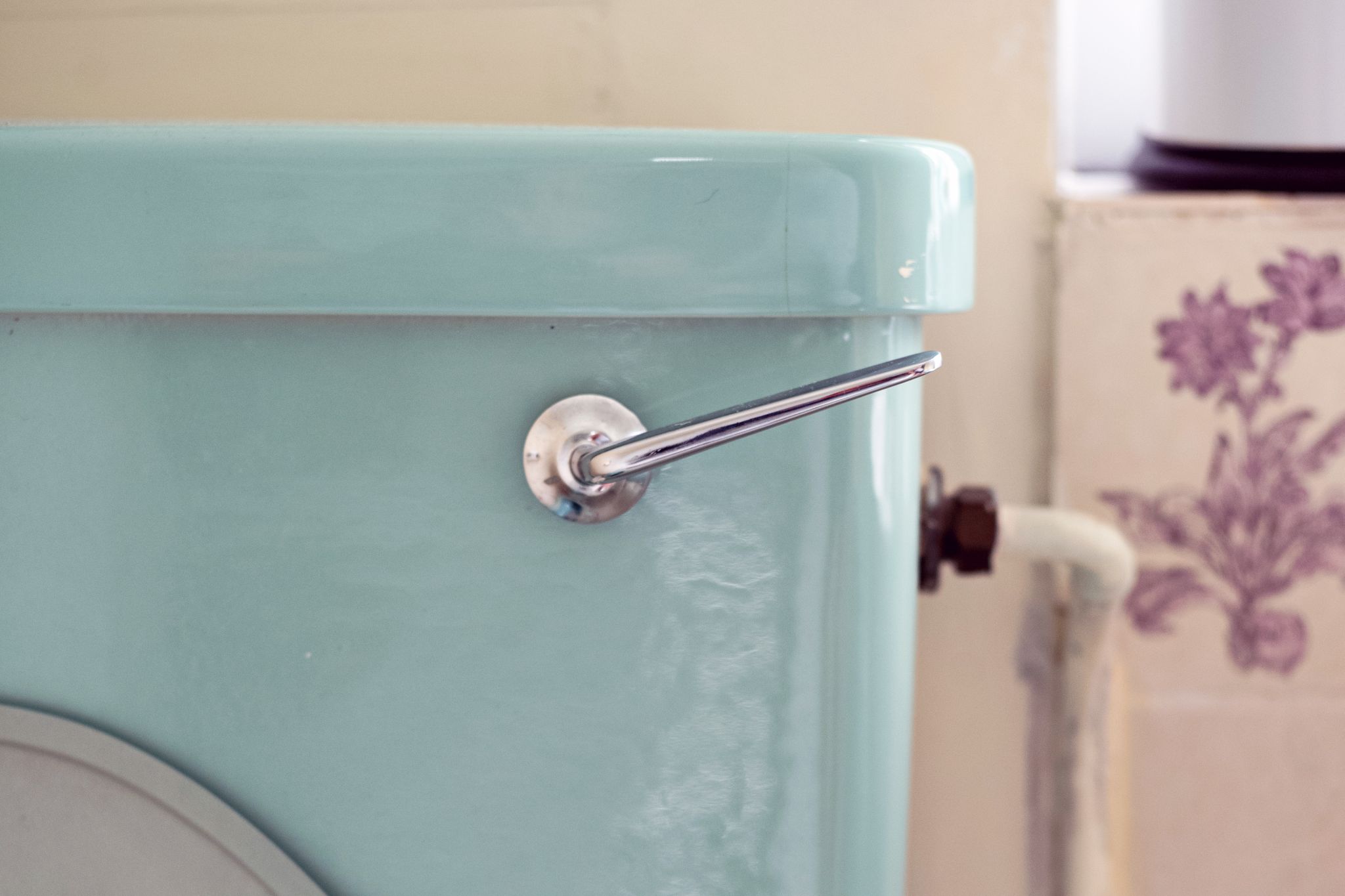If you’ve noticed what happens to an iced drink on a humid summer day, you’ll have an idea why your toilet is sweaty. When warm, damp air hits a cold surface, condensation forms.
Dripping off a toilet tank, this moisture can keep bathroom flooring damp for days, ruining the flooring and even rotting out the subfloor and floor framing.
To prevent these problems, you can start with simple, cheap fixes that may help, or fast-forward to more costly but surer solutions.
Install a Tray
Just as you slip a coaster under a sweaty glass to prevent condensation from leaving a wet ring, you can install a drip tray under the toilet tank to catch the excess moisture. It isn’t very attractive, and you’ll need to empty and clean it regularly. But as a cheap fix (about $18), it does buy you time to figure out a better solution.
Change Habits
If family members cooperate, you might be able to cure a sweaty toilet without spending any money.
- Lower the room’s humidity by taking shorter, cooler showers, especially on hot, humid days.
- Switch on that bathroom fan, and leave the door ajar so the fan draws in drier air from the rest of the house while it exhausts moist shower air. (Don’t open the bathroom window on hot, humid days; run the air conditioner instead.)
- When possible, wait to flush until the room has dried out so you don’t fill the tank with cold water just when the risk of condensation is greatest.
Check the Flapper
Water trickling through a toilet not only wastes water and adds to utility bills, but also makes the tank colder -- and more susceptible to sweating. That's because your tank is constantly refilling itself with cool water.
To check whether the flap is sealing, put a few drops of food coloring into the tank and wait an hour or so. If the color appears in the bowl, replace the valve and flapper -- about $20 if you do it yourself. (First, be sure the fix isn’t even simpler, such as untangling the lift chain.)
Insulate the Tank
If the flapper isn’t the culprit, you can keep the tank from getting cold by insulating its interior. Some hardware stores and home centers sell do-it-yourself kits for about $20.
The downside? They’re a pain to install. You’ll need to empty the tank, cut the insulating foam panels to fit, then glue them to the interior.
Install a New Toilet
Instead of investing a lot of time in retrofitting an old toilet, you’re probably better off installing a new low-flow toilet that uses less water at each flush. That’ll keep cold-water tank refills to a minimum and reduce the sweats.
A toilet that carries the Environmental Protection Agency’s WaterSense label costs about $200. If you don’t feel up to installing it yourself, the average installation costs about $375.
Or, get a model with factory-installed tank insulation. Models range from $320 to $555.
One money-saving DIY option is to replace only the tank, subbing in an insulated tank ($50 to $300) for your old tank. That way, you won’t have to touch the yucky wax ring under the toilet bowl, as you would if you were replacing the entire toilet.
Install an Anti-Sweat Valve
An anti-sweat valve, also known as a mixing valve, is a $24 to $47 plumbing part that introduces a little warm water to the cold water feeding into the toilet tank. Plumbers swear by it as one solution that always works.
The valve can be a good option for a toilet over a basement where plumbing pipes are easily accessible. Otherwise, you might have to open up walls or ceiling finishes to install the valve and link it to a hot water line.
Depending on the amount of work, you may need to pay a plumber to install a mixing valve. If you’ve tried everything else to fix your sweating toilet, that’s sure to be less than what you’d spend to fix a rotten floor.
